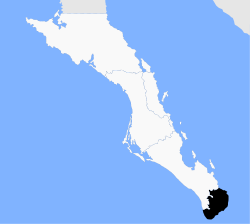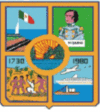Los Cabos Municipality
| Los Cabos | |||
|---|---|---|---|
| Municipality | |||
 |
|||
|
|||
 Location of Los Cabos on Baja California Sur's tip. |
|||
| Country | Mexico | ||
| State | Baja California Sur | ||
| Municipal seat | San José del Cabo | ||
| Largest city | Cabo San Lucas | ||
| Area | |||
| • Total | 3,750.93 km2 (1,448.24 sq mi) | ||
| Population (2015) | |||
| • Total | 287,671 | ||
| • Density | 77/km2 (200/sq mi) | ||
| Time zone | MST (UTC−7) | ||
| • Summer (DST) | MDT (UTC−6) | ||
Los Cabos (Spanish pronunciation: [los 'kaβos]) is a municipality located at the southern tip of Mexico's Baja California Peninsula, in the state of Baja California Sur. It encompasses the towns of Cabo San Lucas and San José del Cabo (the municipal seat), as well as the Resort Corridor that lies between the two. The area was remote and rural until the latter 20th century, when the Mexican government began to develop Cabo San Lucas for tourism, which then spread east to the municipal seat. The main draw is the climate and geography, where desert meets the sea, along with sport fishing, resorts and golf. This tourism is by far the main economic activity with over two million visitors per year.
The town of San José del Cabo is located at the foot of the Sierra de la Laguna, 130 km SSW of La Paz, the state capital of Baja California Sur. Although it is the seat of government for the municipality of Los Cabos, it is smaller than the other city of Cabo San Lucas. However, because of federal and private investments in tourism, its growth is now rivaling that of the more famous resort area.
This growth has been regulated to outside of the town center, especially to the south where the beaches are, leaving the historic town center quiet and relatively unchanged. There are still cobblestone streets, adobe houses, jacaranda trees and a central square in front of a church that dates from the 1700s, where people still gather in the evening when it is cooler. A number of the large houses in the center date from the 19th century, and most of these have been converted into restaurants, art galleries and shops selling everything from fine handcrafts, silver, local gemstones and souvenirs. The art scene in the town is well-developed because of tourism and people with vacation homes. These shops carry high end paintings, sculptures in from traditional Mexican, Mexican contemporary and international artisans and artists. During the high season from October to May, these galleries stay open late into the night. The town has resisted the addition of large shopping malls and chain stores. There is also some colonial era architecture as well, but this style has more in common with colonial towns to the north into the United States rather than the center and south of Mexico.
...
Wikipedia


